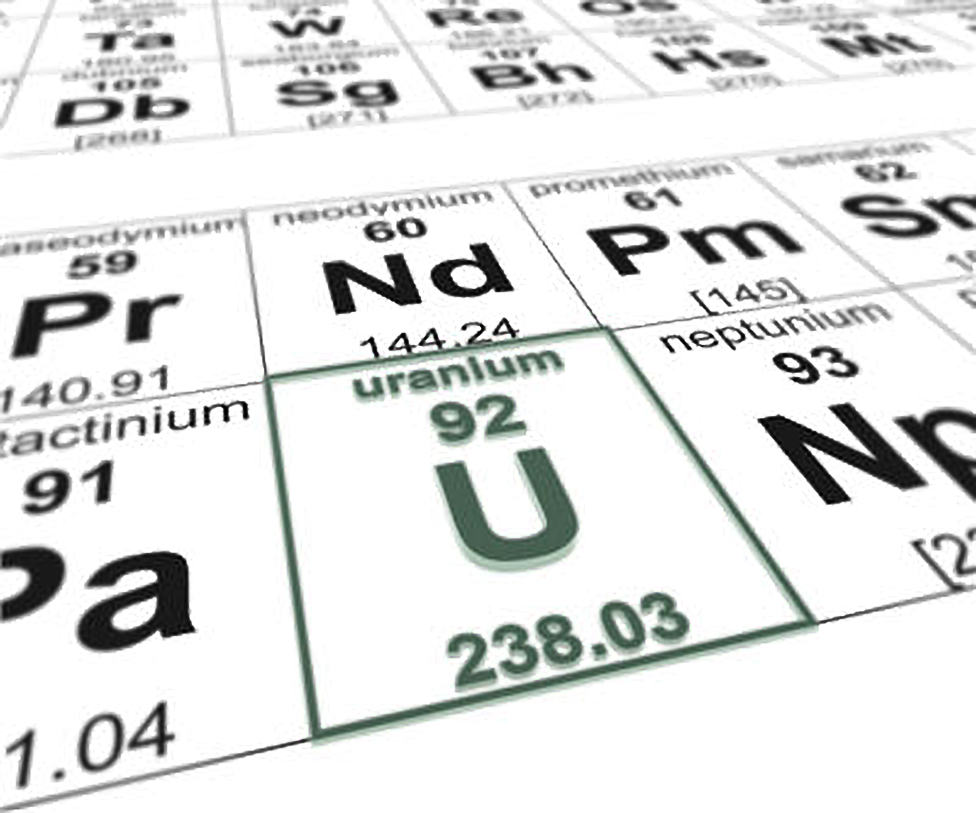What are “critical” minerals and what is the US going to do about them?: Andy Home

Increasing domestic supply across the spectrum of the periodic table is going to be a core recommendation in the report being compiled by the Commerce Department for submission to President Trump. (Shutterstock image)
(The opinions expressed here are those of the author, a columnist for Reuters.)
LONDON, May 24 (Reuters) – NioCorp Developments, which is in the process of raising financing for a minerals project in Nebraska, has just seen its Toronto-listed shares surge from C$0.52 to $0.70 in the space of two days thanks to the U.S. government.
NioCorp’s planned mine and processing facility at Elk Creek will produce three metals – scandium, niobium and titanium – that have all been officially designated “critical” minerals by the Interior Department.
No-one’s mined niobium in the United States since 1959, according to the United States Geological Survey (USGS). The country relies exclusively on imports, mostly from Brazil.
The same is true of scandium, a metal which, according to NioCorp, has been used for several decades in “cutting-edge Soviet and Russian military technologies” but not by the U.S. armed forces due to a lack of supply.
This is precisely the point for U.S. President Donald Trump’s administration, which is developing a strategy to reduce import reliance for metals considered “critical to the economic and national security of the United States.”
What’s critical?
The Department of the Interior has identified 35 minerals as “critical”.
The designation is based on a matrix of criteria, including physical scarcity, concentration of production, supply chain reliability and U.S. import dependency.
Or, as summarized by one Commerce Department representative, “critical means you need it, strategic means you don’t have it.”
The unnamed official, quoted by the USGS in its explanation of the methodology behind the list, was involved with the 1978-1979 Presidential Review of Nonfuel Minerals Policy.
Which is a reminder that this is not the first U.S. Administration that has been worried about mineral import dependence.
However, the list of minerals deemed “critical” has changed significantly over the intervening 40 years as manufacturing processes have advanced.
Consider, for example, the case of the humble computer chip. In the 1980s, according to the USGS, only 12 elements were used in its manufacture. A decade later and the number had risen to 16 and by 2006 as many as 60 elements were being used for high-speed, high-capacity integrated circuits.
Whole new industries have emerged over the same time frame. The lithium ion battery, which sits at the heart of the green transport revolution, was only commercialised at the start of the 1990s.
No big surprise, then, to see both lithium and cobalt, two key but supply-challenged inputs into the new generation of batteries, appear on the list.
So too does the rare earth elements group. None of them are domestically produced in the U.S. and most of them come from just one country, China.
China is also the dominant supplier of other esoteric but “critical” components of the elemental table such as antimony, indium, tellurium and tungsten.
The list includes more conventional commodities such as the platinum group metals (all of them), tin and aluminium.
The USGS stresses that in such cases it’s not just the metal but the entire supply chain that is problematic.
The USGS stresses that in such cases it’s not just the metal but the entire supply chain that is problematic.
“Aluminum is included to represent the aluminum supply chain because the United States is 100 percent reliant on imports of metallurgical grade bauxite, and some forms of high purity alumina and aluminum metal used for important applications also are considered critical.”
The full list of critical minerals can be found here: https://www.usgs.gov/news/interior-releases-2018-s-final-list-35-minerals-deemed-critical-us-national-security-and
Reducing import reliance
The U.S. government is imposing tariffs on imports of aluminium with the stated aim of rekindling dormant domestic production capacity and reducing import dependency.
And increasing domestic supply across the spectrum of the periodic table is going to be a core recommendation in the report being compiled by the Commerce Department for submission to President Trump by Aug. 16, 2018.
Commerce is also likely to recommend improved mapping of resources, streamlining lease permitting and anything else that will “increase discovery, production and domestic refining of critical minerals.”
One possible outcome, welcomed by companies such as NioCorp but feared by environmental groups, could be a revitalization of the U.S. mining industry.
As the Commerce Department itself notes, “any recommendations to improve permitting processes for critical minerals will improve permitting processes for all minerals administered under the same laws and regulations by the Bureau of Land Management and other Federal land management agencies.”
However, it’s going to be a slow process.
NioCorp, for example, is the only prospective near-term project for niobium and scandium in North America and, even with a full feasibility study already completed, the company still needs to raise around $1 billion to realise its ambitions. Which is why the Commerce Department report will also look at other sources of supply such as recycling and cooperating with “allies and partners” to access targeted minerals.
Defense Logistics Agency
The Commerce Department’s list of potential measures doesn’t include the creation of a national stockpile of critical minerals such as that operated in China by the state-run Strategic Reserves Bureau.
That’s because the United States already has one, operated by the Defense Logistics Agency (DLA), the body charged with managing supply chains for the country’s armed forces.
As of September 2016, the most recent operational report, the DLA held stocks of many of the minerals on the Interior Department’s list with a total value of $1.15 billion.
On the current financial year’s potential shopping list are rare earths (up to a maximum 416 tonnes), battery precursors such as lithium nickel cobalt aluminium oxide (2.16 tonnes), ferroniobium (209 tonnes) and truly esoteric goodies such as cadmium zinc tellurium and tungsten rhenium.
Catching up
The DLA is also heavily involved both in recycling materials such as germanium and studying possible alternatives to existing “critical” military inputs.
But it can only be part of a broader strategy that will have to be both multidimensional and highly flexible.
There is no simple solution to the fact that the United States doesn’t have any commercially exploitable bauxite deposits or that cobalt production is so concentrated on the African Copperbelt.
Moreover, other countries, particularly China, have already aggressively built out supply chains to supply the battery-makers that will power the world’s growing electric vehicle fleet.
Identifying which minerals are “critical” is the easy part. Working out what to do about them is going to be much harder.
(By Andy Home; Editing by Keith Weir)
{{ commodity.name }}
{{ post.title }}
{{ post.date }}




Comments